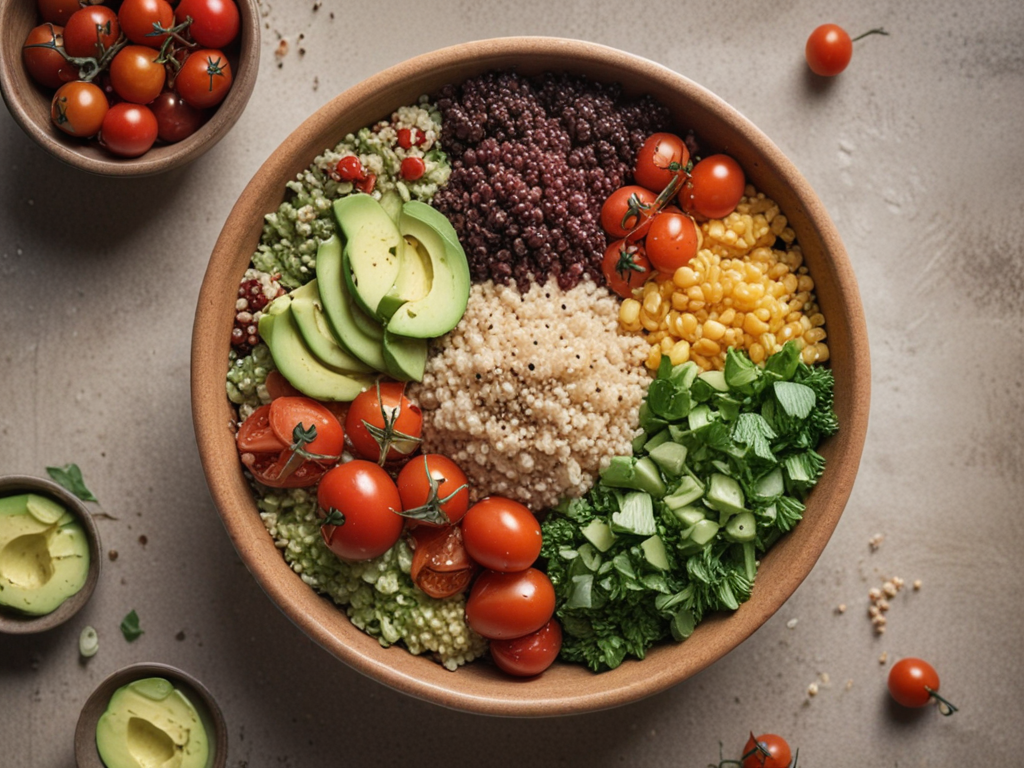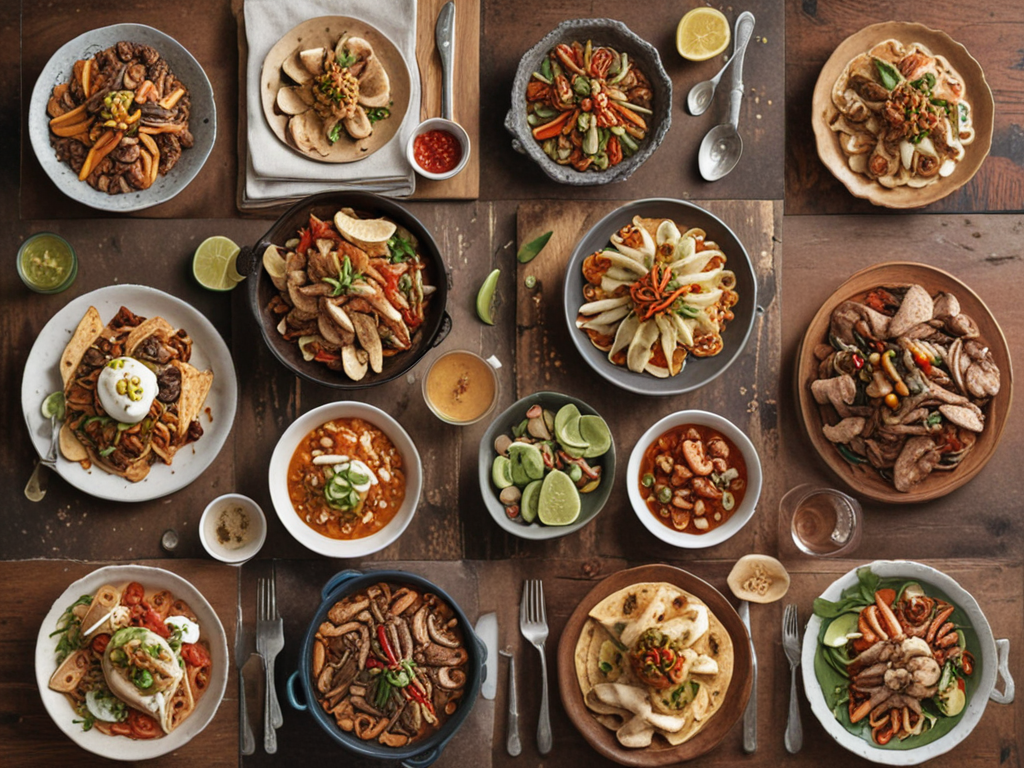
While some may view tofu as bland and unappealing, exploring its versatility in various cuisines and cooking methods can truly transform this soy-based ingredient into a culinary delight. From its different types and health benefits to its role in both traditional Asian dishes and modern Western cuisine, tofu offers a wide range of possibilities for creating flavorful and satisfying meals. Whether you’re a seasoned cook or just starting out in the kitchen, discovering the many faces of tofu might just inspire your next culinary adventure.
Tofu Types and Varieties
When exploring tofu types and varieties, it is essential to ponder the diverse options available in the market. Tofu comes in various textures and flavors, making it a versatile ingredient in cooking. From silken tofu, which has a smooth and creamy texture perfect for desserts and blended dishes, to firm tofu that holds its shape well in stir-fries and grilling, there is a tofu type suitable for every culinary need.
Regarding flavors, tofu can range from plain to seasoned or smoked varieties, adding depth to dishes without overpowering other ingredients. Its neutral taste allows it to absorb the flavors of the dishes it is cooked with, making it a great canvas for various cuisines.
Culinarily, tofu is a powerhouse ingredient that can be used in a myriad of ways. It can be cubed and added to soups, salads, and curries, crumbled for tacos or pasta sauces, or marinated and grilled for a flavorful main course. The versatility of tofu makes it a staple in vegetarian and vegan diets, providing protein and texture to dishes while being adaptable to different cooking styles.
Health Benefits of Tofu
I will now outline the nutritional value and health implications of tofu. Understanding its nutrient content and the potential benefits it offers can help make informed decisions about incorporating tofu into a balanced diet. Let’s explore how tofu can contribute to overall well-being and support a healthy lifestyle.
Nutritional Value Overview
Exploring the nutritional value of tofu reveals a plethora of health benefits associated with this versatile plant-based protein. Tofu offers more than just a meat substitute; it is a powerhouse of nutrients. Here are some key points to take into account:
- Rich in Protein: Tofu is an excellent source of plant-based protein, making it a valuable addition to vegetarian and vegan diets.
- High in Calcium: Tofu is a good source of calcium, aiding in maintaining strong bones and teeth.
- Varied Texture: Tofu’s texture can range from silky smooth to firm and chewy, allowing for diverse culinary applications.
- Versatile Flavor: Due to its mild taste, tofu easily absorbs the flavors of other ingredients, making it a flexible ingredient in various dishes.
Health Implications of Tofu
Delving into the health implications of tofu reveals a myriad of benefits that contribute to overall well-being and vitality. Tofu, a versatile soy-based protein, offers numerous health advantages. For individuals with soy allergies, it’s important to exercise caution when consuming tofu to prevent adverse reactions. However, for many, tofu can be a valuable addition to a balanced diet. Its low saturated fat content makes it heart-friendly, while being a good source of plant-based protein. Tofu also contains isoflavones, which may have positive hormonal effects, potentially reducing the risk of certain hormone-related cancers. Incorporating tofu into meals not only diversifies one’s diet but also supports overall health and wellness.
Tofu in Traditional Asian Cuisine
In Traditional Asian Cuisine, tofu serves as a versatile and essential ingredient in a variety of dishes. Tofu fermentation adds depth of flavor and richness to many traditional Asian recipes. Here are some key ways tofu is used in such cuisine:
- Tofu in Soups: Tofu is often added to hearty broths and soups, absorbing the flavors of the surrounding ingredients while providing a soft and silky texture.
- Stir-fried Tofu: Cubes of tofu are commonly stir-fried with an array of vegetables and savory sauces, creating a satisfying and protein-rich dish.
- Tofu Skin Rolls: Tofu skin, a byproduct of soy milk production, is rolled up with vegetables or meat substitutes, offering a chewy texture and absorbing the flavors of the fillings.
- Tofu Desserts: In Asian cuisine, tofu is also used in desserts like tofu pudding or soy custard, providing a smooth and creamy consistency while being a healthier alternative to traditional dairy desserts.
Tofu in Western Dishes
When incorporating tofu into Western dishes, its versatility and ability to mimic various textures and flavors make it a popular choice among chefs and home cooks alike. In Western cuisine, tofu can be used in a variety of ways to add a nutritious and delicious element to your meals. Here are some creative ways to incorporate tofu into your favorite Western dishes:
| Tofu in Pasta Dishes | Tofu in Salads | Tofu in Casseroles |
|---|---|---|
| Tofu can be crumbled and used as a protein-rich topping for pasta dishes. | Add cubed tofu to salads for a boost of protein and a creamy texture. | Incorporate tofu into casseroles as a nutritious substitute for meat, adding a unique twist to classic recipes. |
| Tofu in Sandwiches | ||
| Use marinated and grilled tofu slices as a flavorful filling for sandwiches, providing a satisfying plant-based alternative. |
Tofu as a Meat Substitute
Tofu serves as a versatile and nutritious meat substitute in various culinary dishes, providing a plant-based alternative rich in protein and adaptable to different cooking styles. When using tofu as a meat substitute, its texture and plant-based protein content play essential roles in creating delicious and satisfying meals. Here are some key points to bear in mind when substituting tofu for meat:
- Texture: Tofu can mimic the texture of meat when cooked properly, offering a similar mouthfeel in dishes.
- Protein: Tofu is a great source of plant-based protein, making it an ideal substitute for meat in vegetarian or vegan diets.
- Versatility: Tofu can be marinated, grilled, fried, or baked, allowing for a variety of cooking methods to suit different recipes.
- Absorption: Tofu readily absorbs flavors from spices, sauces, and marinades, enhancing its taste and making it a versatile ingredient in various cuisines.
Tofu Cooking Techniques
Exploring various culinary methods enhances the versatility of tofu in creating flavorful and satisfying dishes. When it comes to cooking tofu, mastering different techniques can elevate your meals. Here are some essential tofu cooking techniques to try:
| Technique | Description | Example |
|---|---|---|
| Tofu marinating techniques | Marinating tofu infuses it with flavors, enhancing taste and texture. | Marinate tofu in soy sauce and garlic for an hour before cooking. |
| Tofu grilling methods | Grilling tofu adds a smoky charred flavor, perfect for salads or sandwiches. | Grill tofu slices on a hot grill for 3-4 minutes per side. |
| Tofu baking tips | Baking tofu creates a crispy exterior while keeping a tender inside. | Bake tofu cubes at 400°F for 25-30 minutes until golden brown. |
| Tofu sautéing tricks | Sautéing tofu quickly seals in flavors, ideal for stir-fries or pasta dishes. | Sauté tofu in a hot pan with oil and your favorite seasonings for 5-7 minutes. |
Tofu Recipes to Try
Let’s explore some delicious tofu recipes that are easy to make and packed with flavor. From a mouthwatering Tofu Stir-Fry to invigorating Silken Tofu Smoothies, there’s a variety of dishes to suit different tastes. Don’t forget to try the crispy and satisfying Tofu Nuggets for a delightful crunchy treat.
Tasty Tofu Stir-Fry
To create a flavorful and satisfying dish, consider incorporating tofu into your stir-fry recipe. When preparing a tasty tofu stir-fry, there are a few key points to keep in mind:
- Tofu marinades: Experiment with different marinades to infuse your tofu with delicious flavors.
- Seasoning: Don’t be afraid to play around with various seasonings to enhance the taste of your stir-fry.
- Tofu texture: Adjust the cooking time based on the texture you prefer, whether you like your tofu soft or crispy.
- Thickness: Cut your tofu into the desired thickness to achieve the perfect balance of tenderness and bite in your stir-fry.
Silken Tofu Smoothies
Considering the versatility of silken tofu, incorporating it into smoothies offers a nutritious and delicious way to enjoy this ingredient. Protein-packed smoothies blended with silken tofu provide a creamy texture and a boost of protein, making them a perfect option for a quick and satisfying meal or snack. One of the silky texture secrets of using silken tofu in smoothies is its ability to create a velvety consistency without overpowering the flavors of other ingredients. To make a silken tofu smoothie, simply blend silken tofu with fruits, vegetables, nut butter, or a sweetener of your choice until smooth. Experiment with different combinations to find your favorite protein-rich smoothie that will keep you energized throughout the day.
Crispy Tofu Nuggets
Having explored the versatility of silken tofu in smoothies, the next tofu recipe to try is creating crispy tofu nuggets that are both flavorful and satisfying. When making these crunchy tofu bites, experimenting with different savory tofu marinades can elevate the taste profile. Here are some ideas to get you started:
- Spicy Tofu Tacos: Fill your tacos with crispy tofu nuggets for a delicious and vegetarian-friendly twist.
- Baked Tofu Bites: Opt for a healthier alternative by baking the tofu instead of frying for a lighter yet still crispy texture.
- Garlic Parmesan Tofu Nuggets: Add a savory kick by coating your tofu in a mixture of garlic, parmesan, and breadcrumbs before baking.
- Asian-Inspired Tofu Nuggets: Marinate your tofu in a blend of soy sauce, ginger, and sesame oil for an umami-packed flavor explosion.





